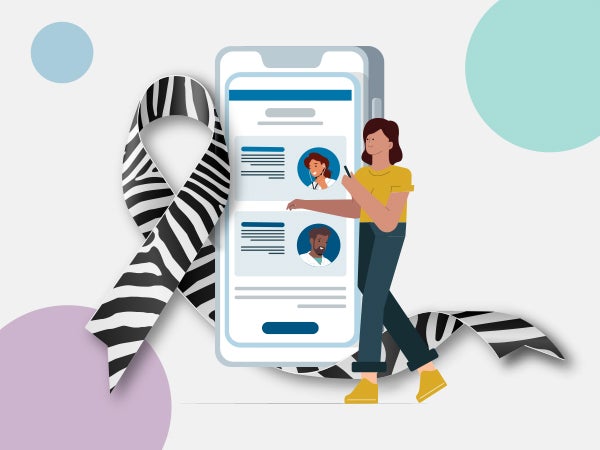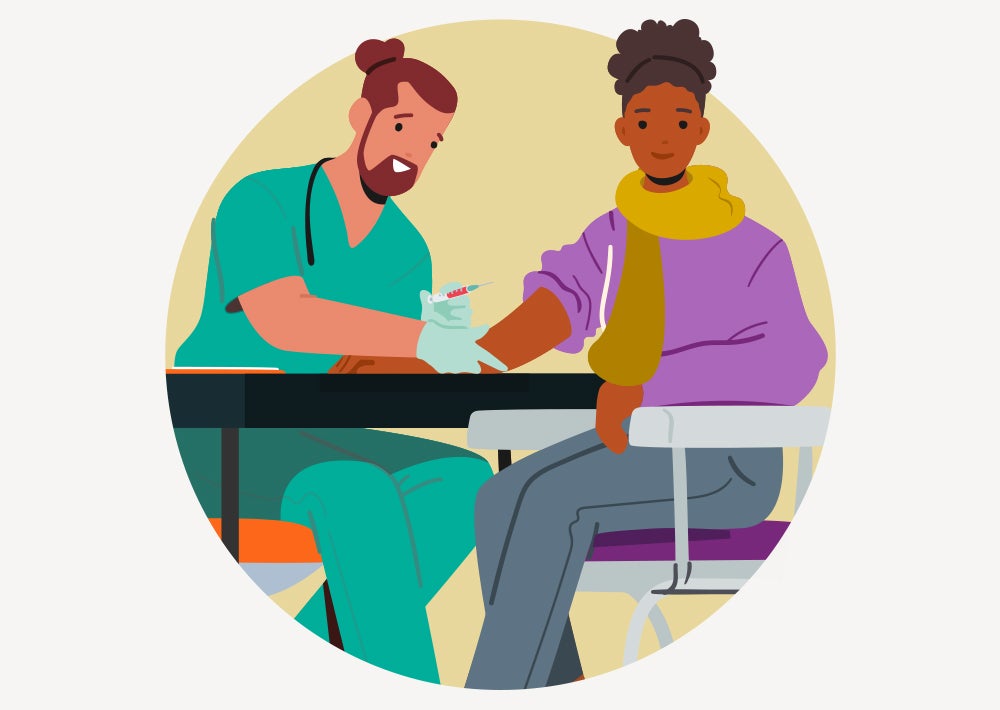
Even after getting diagnosed, challenges for patients living with a rare disease often continue throughout their care journey. Hear from industry experts on how to provide support and address barriers early on.
An estimated 30 million Americans live with a rare disease.1 And while an early diagnosis is essential for connecting them to the specialized care, treatment and support they need, patients with rare conditions typically experience significant delays in securing a diagnosis. In fact, 46% of patients with a rare disease search at least a year for a definitive diagnosis, and 1 in 5 search for more than five years.2
Even after getting diagnosed, challenges for patients living with a rare disease often continue throughout their care journey—such as finding an appropriate specialist for their condition or navigating financial burdens associated with diagnostic tests and treatments, explains Jennifer Roan, Vice President and General Manager–U.S., at PTC Therapeutics. “Addressing these barriers requires a comprehensive approach that involves advocacy, education and collaboration among stakeholders in the healthcare ecosystem,” she says.
Here are three ways the industry can help patients with rare conditions address those challenges early in their care journey.
1. Create empathetic, patient-centric content to proactively drive diagnoses
Messaging and creative that improves patients’ understanding of rare-disease signs and symptoms delivers the types of information those with rare conditions value most. Often, many patients and caregivers in the rare disease community struggle with feeling misunderstood, having typically spent years living with ongoing symptoms that have been misdiagnosed.
“By reaching these patients at the beginning of their care research, we can provide them with accurate information, support and resources that can potentially expedite the diagnostic process,” Roan says. “Early intervention not only alleviates suffering but can also affect the progression of the disease and improve the overall prognosis for patients.”
Applying a sensitive, patient-centric approach to messaging is particularly effective in the rare disease community, says Kat Smith, Content Strategy Director at Phreesia. “Content that conveys understanding and empathy throughout the patient’s health journey helps these patients feel seen and supported when they are experiencing uncertainty around their health and have a lot of unanswered questions,” she explains.
In addition, messaging that suggests a patient’s symptoms might be related, or that encourages them to bring up the possibility of a rare disease with their doctor can empower them to have more in-depth exam-room discussions. From there, doctors may then pursue testing options that could bring the patient closer to a diagnosis.
2. Help patients with rare diseases find the right specialists
Once a patient with a rare condition finally obtains a diagnosis, their next challenge is initiating treatment with the right specialist. However, finding a clinician who has experience with their specific condition can be a lengthy and difficult process, which can negatively affect their time to treatment—and ultimately, their health outcomes.
Identifying the right disease expert is critical for ensuring that patients living with rare conditions receive their best possible treatment plan. Specialists who are familiar with the latest research and developments related to a patient’s rare disease can help get that patient on a treatment plan that will give them their best chance for successful outcomes. However, the rarer the disease, the more niche its physician and research communities tend to be, which can make the search for a specialist even more difficult, says Alicia Cowley, MD, Clinical Content Director at Phreesia.
“It’s really important for brands and providers to help patients understand that rare diseases are different than most common conditions, and to then guide them toward appropriate subspecialists for tailored treatment plans, as opposed to a care plan that a more generalist-type of specialist may be able to provide,” she explains.
Digital tools can play an expediting role in linking patients with providers who have expertise in their rare condition. By accelerating their connection to the right care from the right specialist, digital tools can help patients living with rare diseases get the right perspective on treatment more quickly and avoid inefficiencies or unintentional missteps that might result from working with providers who have little experience with their condition.
Roan adds, “By proactively engaging with patients during this critical phase, we can bridge gaps in care and facilitate timely access to appropriate treatments, ultimately improving outcomes.”
3. Deliver tailored support and resources
Living with a rare disease is not only isolating, it also can be confusing and expensive. With the high cost and complex administration regimens of many rare disease treatments, it’s important to meet patients with tailored financial assistance, educational materials and community support resources to help them overcome adherence barriers.
Direct medical costs for patients with rare diseases are three to five times higher than costs for patients with non-rare diseases.3 While many patients may experience relief once they’ve been diagnosed, the financial burden of rare disease treatment options—especially if their insurance doesn’t cover them—can quickly become overwhelming, Cowley explains.
“On the one hand, the patient is relieved to know that there are treatment options available, but then the heartbreak sets in, realizing that insurance might not cover it,” she says. These are the moments when providing patient support programs (PSPs), co-pay assistance or access to compassionate use programs for investigational therapies are paramount for helping patients with rare diseases continue their treatment journey.
Industry stakeholders can also provide support by partnering with patient advocacy organizations and healthcare providers to establish new PSPs, facilitate peer-to-peer connections and advocate for policy changes to improve access to rare disease treatments, says Roan.
“By combining innovative and transformative therapies with patient-centered support initiatives, biotech/pharma can contribute to a more holistic and inclusive approach to rare disease care from the earliest stages of the patient journey,” she says.
Find out how Phreesia can help you make care easier every day for patients with a rare disease by empowering them to be active participants at every stage of their healthcare journey.
References:
1 Kaufmann P, Pariser AR, Austin C. From scientific discovery to treatments for rare diseases—the view from the National Center for Advancing Translational Sciences—Office of Rare Diseases Research. Orphanet Journal of Rare Diseases. 2018;(13):196. https://doi.org/10.1186/s13023-018-0936-x
2 The search for a specialist. https://lifesciences.phreesia.com/infographics/the-search-for-a-specialist/
3 Tisdale A, Cutillo CM, Nathan R, Russo P, Laraway B et al. The IDeaS initiative: pilot study to assess the impact of rare diseases on patients and healthcare systems. Orphanet Journal of Rare Diseases. 2021;(16):429. https://doi.org/10.1186/s13023-021-02061-3


